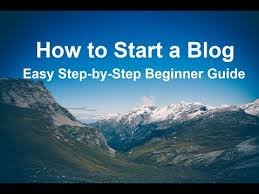Here’s a comprehensive guide on how to start a personal blog in 10 easy steps.
Table of Contents
Starting a personal blog can be a rewarding experience, whether you’re looking to share your thoughts, build a community, or even make money. With the right steps, anyone can start a blog. Here’s a comprehensive guide on how to start a personal blog in 10 easy steps.
Step 1: Choose Your Blogging Niche
Step 2: Pick a Blogging Platform
Step 3: Choose a Domain Name
Step 4: Purchase Hosting
Step 5: Install WordPress
Step 6: Choose a Blog Theme
how to start a personal blog in 10 easy steps
Step 7: Install Essential Plugins
Step 8: Create Essential Pages
Step 9: Start Writing Your First Blog Posts
Step 10: Promote Your Blog
Here’s a comprehensive guide on how to start a personal blog in 10 easy steps.
Starting a personal blog can be a rewarding experience, whether you’re looking to share your thoughts, build a community, or even make money. With the right steps, anyone can start a blog and embark on an exciting journey of self-expression and connection. In this detailed guide, we’ll walk you through the process of setting up your own personal blog from scratch.
The first step is to decide on the purpose and focus of your blog. Do you want to share your personal experiences, thoughts, and insights? Are you passionate about a particular topic or niche that you’d like to explore and discuss? Clearly defining your blog’s purpose will help you create engaging content and attract the right audience.
Next, you’ll need to choose a platform to host your blog. There are several popular options, such as WordPress, Blogger, and Squarespace, each with its own set of features and capabilities. Take the time to research and compare these platforms to find the one that best suits your needs and preferences.
Once you’ve selected a platform, it’s time to choose a memorable and relevant domain name for your blog. Your domain name should reflect the theme or focus of your blog and be easy to remember. It’s also important to ensure that the domain name is available and not already in use.
Designing the visual aspects of your blog is a crucial step. This includes selecting a visually appealing theme or template, customizing the layout, and incorporating your personal branding elements, such as a logo, color scheme, and imagery. A clean, user-friendly design will help create a professional and inviting atmosphere for your blog.
Crafting engaging and informative content is the heart of any successful blog. Decide on the types of content you want to create, such as blog posts, articles, tutorials, or even multimedia content like videos or podcasts. Develop a content strategy that aligns with your blog’s purpose and resonates with your target audience.
Promoting your blog and building an audience is essential for its growth and success. Leverage social media platforms to share your content, engage with your readers, and network with others in your niche. Participate in online communities, guest post on other blogs, and consider implementing search engine optimization (SEO) techniques to improve your blog’s discoverability.
As your blog gains traction, you may want to explore monetization options, such as advertisements, sponsorships, affiliate marketing, or even selling your own products or services. This can turn your blog into a source of passive income, but it’s important to strike a balance between monetization and providing value to your readers.
Consistency is key when it comes to maintaining a successful blog. Establish a regular posting schedule and stick to it, ensuring that your readers can count on new content from you on a consistent basis. Additionally, be responsive to your audience by engaging with comments and feedback, and continuously seek ways to improve the overall experience for your readers.
Measuring and analyzing your blog’s performance is crucial for understanding your audience and optimizing your content and strategies. Utilize web analytics tools to track metrics such as page views, unique visitors, and engagement rates, and use this data to make informed decisions about the direction of your blog.
Finally, don’t forget to enjoy the journey! Starting and maintaining a personal blog can be a rewarding and fulfilling experience. Embrace the opportunity to express yourself, connect with like-minded individuals, and potentially even turn your blog into a thriving online presence.
Conclusion
Starting a personal blog can be a fulfilling way to share your passion, connect with like-minded people, or even build a business. By following these 10 steps, you can set up your blog, create valuable content, and promote it effectively to grow your audience. Whether you’re blogging as a hobby or aiming to turn it into a full-time career, consistency and quality are the keys to success.
how to start a personal blog in 10 easy steps
